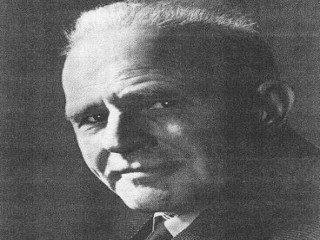
Emil Brunner biography
Date of birth : 1889-12-23
Date of death : 1966-04-06
Birthplace : Zurich, Switzerland
Nationality : Swiss
Category : Famous Figures
Last modified : 2011-04-12
Credited as : Theologian, reformer, dialectical theology movemen
Emil Brunner, Swiss Reformed theologian, was a principal contributor to what came to be known popularly (though inaccurately) as "neo-orthodoxy," which was in opposition to late 19th and early 20th century "liberal" Protestant theology.
Emil Brunner was born at Winterthur, near Zurich, Switzerland, on December 23, 1889. After completing his early education at the Gymnasiumin Zurich in 1908, he pursued advanced studies at the Universities of Zurich and Berlin, receiving the Doctor of Theology degree from the former institution in 1913. His formal education included a year of post-doctoral studies at Union Theological Seminary in New York in 1919-1920. In later years he was to receive honorary degrees from a number of the most prestigious centers of learning on the continent of Europe, in Great Britain, and in the United States.
From 1916 to 1924 Brunner was pastor of a small congregation in the mountain village of Obstalden in the Canton of Glarus in Switzerland. From 1945 to 1955 he occupied the Chair of Systematic and Practical Theology at the University of Zurich.
In the early 1920s Brunner became loosely associated with a small group of theologians who like himself had become disillusioned by the reigning "liberal" religious thought in which they had been trained. The group (which included Karl Barth, Eduard Thurneysen, Georg Merz, and Rudolf Bultmann) was to initiate a revolution in Protestant theology. Awakened to the inadequacies of liberalism by the catastrophe of World War I and appalled in particular by the pervasive notion of human "progress," these men (in the spirit of the Reformation of the 16th century) set about the task of regrounding faith firmly and solely in the self revelation of God in Christ. The movement begun by these men is variously alluded to as "the theology of crisis," "dialectical theology," "neo-orthodoxy," "neo-Protestantism," "Barthian Theology," or any one of several other designations. It was publicized through a new journal of religion entitled Zwischen den Zeiten ("Between the Times") which the group had established for that purpose.
Some of these men turned their attention to problems of New Testament hermeneutics (interpretaton of the Bible) or to a reinterpretation of culture and civilization. Brunner and Barth, however, each working independently, began intensive life-long labors in the area of systematic theology.
In Christian theology Brunner was unquestionably one of the two or three most eminent system builders of the 20th century. His method was to publish a preparatory volume on each of the cardinal doctrines of the faith and then to distill the whole in a comprehensive system of dogmatics. The titles of his books, and numerous phrases in them, became favorite modes of expression of key ideas for a whole generation of professionals in theology. Always the exponent of a living faith, he was sensitive to the great issues of that faith as demonstrated in distinguished performance at the writing desk, in the classroom and pulpit, on the lecture platform, and at conference tables around the world.
He was a theologians' theologian, yet he was a simple believer and churchman who spoke meaningfully to the generality of men. He professed to regard himself as first a preacher of the gospel and only then as also a theologian. He was critically sensitive, moreover, to the actual contest within which theology must take place. He wrote and spoke consciously, therefore, to 20th century man, believing that no artificial barriers should hinder the faith of those who belong by destiny to this particular stage of history. Holding that the gospel has its own inherent "offence," he was unwilling that any extraneous material should unnecessarily scandalize modern thinking men.
Apart from the Reformed tradition in which he was nurtured, three contemporary movements helped to mold his thought. The first was the religious socialist movement, which in its Swiss form had a firm Christological grounding. A second was the Oxford Group Movement, which for a time seemed to offer insights for the renewal of the church. And a third was the "I-Thou philosophy" of Soren Kierkegaard, Ferdinand Ebner, and Martin Buber, which helped Brunner toward a new understanding of truth.
From 1930 until the end of his life he was at the forefront of the ecumenical movement. From 1953 to 1955 he labored in the establishment of the International Christian University in Japan, thus crowning a career-long concern for missionary service.
Brunner was married and had four sons. He died, following a lengthy illness, on April 6, 1966.
Among his writings were: The Mediator; The Divine Imperative; Our Faith; Man in Revolt; Truth as Encounter; Revelation and Reason: The Christian Doctrine of Creation and Redemption; The Christian Doctrine of the Church, Faith, and the Consummation; The Misunderstanding of the Church; and Eternal Hope.
















